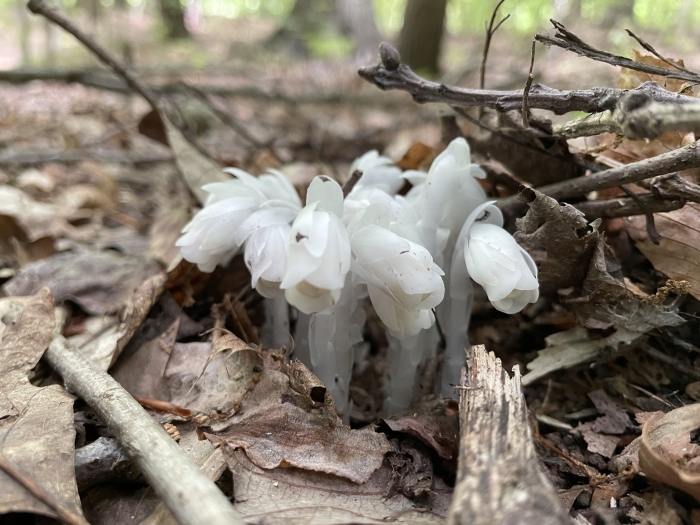Indian Pipe
(Monotropa uniflora)
Indian Pipe (Monotropa uniflora)
/
/

Annie Weissman
CC BY 4.0
Image By:
Annie Weissman
Recorded By:
Copyright:
CC BY 4.0
Copyright Notice:
Photo by: Annie Weissman | License Type: CC BY 4.0 | License URL: http://creativecommons.org/licenses/by/4.0/ | Rights Holder: Annie Weissman | Publisher: iNaturalist | Date Created: 2021-06-08T17:23:24Z |





Estimated Native Range
Summary
Monotropa uniflora, commonly known as Indian pipe or ghost plant, is an herbaceous perennial that is notable for its lack of chlorophyll, which gives it a distinctive waxy white appearance. It is native to temperate deciduous forests, often forming symbiotic relationships with tree roots and mycorrhizal fungi in the soil, which allow it to obtain nutrients through mycoheterotrophy. This unique plant is typically found in the understory of dense, moist, and shaded woodlands, where it grows in small clumps. Indian pipe reaches a height of 4 to 10 inches (10 to 25 cm) and produces singular, nodding flowers on each stem during the summer months. The flowers are bell-shaped and can occasionally show a pale pink hue.
Indian pipe is valued for its unusual aesthetic and is sometimes used in shade gardens for its ghostly appearance. It requires a specific set of conditions to thrive, including cool, moist, well-drained soil rich in organic matter, and deep shade. It is not commonly cultivated due to its complex ecological relationships and is best appreciated in its natural habitat. While it has been used in traditional medicine, caution is advised due to its potential toxicity. Indian pipe does not pose significant problems in terms of diseases or pests, but it is sensitive to environmental disturbances and habitat loss.CC BY-SA 4.0
Indian pipe is valued for its unusual aesthetic and is sometimes used in shade gardens for its ghostly appearance. It requires a specific set of conditions to thrive, including cool, moist, well-drained soil rich in organic matter, and deep shade. It is not commonly cultivated due to its complex ecological relationships and is best appreciated in its natural habitat. While it has been used in traditional medicine, caution is advised due to its potential toxicity. Indian pipe does not pose significant problems in terms of diseases or pests, but it is sensitive to environmental disturbances and habitat loss.CC BY-SA 4.0
Plant Description
- Plant Type: Herb
- Height: 0.2-1 feet
- Width: 0.5-1 feet
- Growth Rate: Slow
- Flower Color: White
- Flowering Season: Summer, Fall
- Leaf Retention: Deciduous
Growth Requirements
- Sun: Part Shade, Full Shade
- Water: Medium
- Drainage: Medium, Slow
Common Uses
Low Maintenance
Natural Habitat
Temperate deciduous forests with symbiotic relationships with tree roots and mycorrhizal fungi
Other Names
Common Names: Corpse plant, Ghost plant
Scientific Names: , Monotropa uniflora, Hypopitys uniflora, Monotropa brittonii, Monotropa morisoniana, Monotropa morisonii, Monotropa uniflora f. rosea, Monotropa uniflora var. typica,
GBIF Accepted Name: